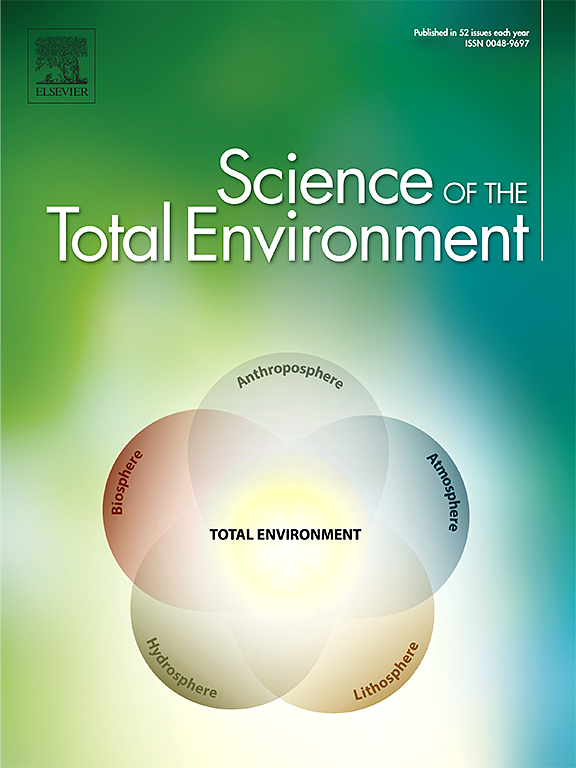Herbicide and metabolite mobility in soil profiles under conventional tillage and non-tillage: A two-year comparative field experiment
IF 8.2
1区 环境科学与生态学
Q1 ENVIRONMENTAL SCIENCES
引用次数: 0
Abstract
A two-year field experiment was conducted to compare the impact of conventional tillage (CT) and non-tillage (NT) on the mobility in two soils (S1 and S2) of the herbicides S-metolachlor (SMOC), foramsulfuron (FORAM), and thiencarbazone-methyl (TCM), and the formation of their main metabolites. Herbicide and metabolite distribution through the soil profiles (0–50 cm) was determined over two maize cycles. After the first application, the mobility of SMOC and TCM was similar under CT conditions, with higher concentrations in S2 + CT topsoil than in S1 + CT due to the higher organic carbon content in S2 and its retention ability, while both herbicides were detected in the entire S1 + CT profile over time. Under NT management, partial interception by the mulch during application reduced the amount of herbicides that initially reached the topsoil, modifying their mobility dynamics. SMOC and TCM properties facilitated their transport through the soil profile, favoured by the irrigation applied shortly after their application. The total SMOC and TCM balance in S1 and S2 profiles revealed possible leaching below 50 cm, especially in soils+CT. However, the simultaneous degradation of SMOC and TCM might also occur on the mulch and/or in soil profiles, as indicated by the continuous detection of two SMOC metabolites (ethane sulfonic acid, SMOC-ESA, and oxanilic acid, SMOC-OA) and one TCM metabolite (thiencarbazone, TCM-MET1) throughout the soil profile in all the treatments assayed. FORAM dissipated faster than SMOC and TCM in all the treatments, with a total balance in all the soil profiles <40 % after 13 days. The high water solubility and polarity of FORAM might have enhanced its leaching, although its degradation to its two main metabolites was also observed in all cases. The mobility dynamics of the three herbicides in the second experimental period were similar for both soils under CT, but differed in soils under NT compared to the first application, with higher interception by the greater amount of mulch on the soil surface in the second year.

求助全文
约1分钟内获得全文
求助全文
来源期刊

Science of the Total Environment
环境科学-环境科学
CiteScore
17.60
自引率
10.20%
发文量
8726
审稿时长
2.4 months
期刊介绍:
The Science of the Total Environment is an international journal dedicated to scientific research on the environment and its interaction with humanity. It covers a wide range of disciplines and seeks to publish innovative, hypothesis-driven, and impactful research that explores the entire environment, including the atmosphere, lithosphere, hydrosphere, biosphere, and anthroposphere.
The journal's updated Aims & Scope emphasizes the importance of interdisciplinary environmental research with broad impact. Priority is given to studies that advance fundamental understanding and explore the interconnectedness of multiple environmental spheres. Field studies are preferred, while laboratory experiments must demonstrate significant methodological advancements or mechanistic insights with direct relevance to the environment.
 求助内容:
求助内容: 应助结果提醒方式:
应助结果提醒方式:


